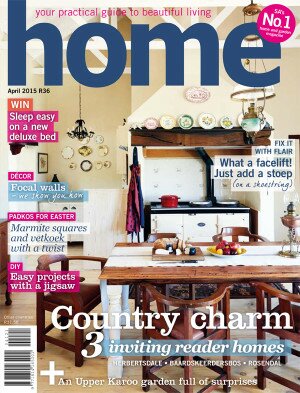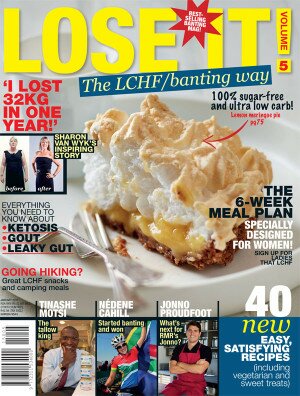-
Create with resin
You can create many lovely things with resin – especially if you make your own moulds. Here are a few good ideas
12 September 2014
Make your own moulds
You can use almost anything to make a mould! And you can use that mould repeatedly. Start with an object that’s flat on one side, as it’s simpler and easier to work with.You will need
- object from which you’d like to make a mould
- silicone-rubber parts A and B (refer to step 2)
- plastic container for mixing the rubber
- flat-bottomed plastic bowl for the mould (with enough space on the inside to fit the object from which you are making the mould)
- plastic spoons
- paper cups
- tongue depressors (cut one end straight)
- nitrile-rubber or vinyl gloves (not latex)
- safety goggles
NOTE Work at room temperature and in a well-ventilated area. Wear safety goggles and nitrile-rubber gloves or vinyl gloves (latex inhibits the working of the rubber). If the object from which you’d like to make the mould is porous, you will need to seal it beforehand with a suitable product, such as Super Seal, or paint it with enamel paint.
Resin, colouring, silicone rubber and sealant from AMT Composites (). Jewellery blanks from Kaqala beads ().
To make
1 Place the object from which you’d like to make the mould, with flat side facing down, in a flat-bottomed plastic bowl. TIP Secure the object with Prestik if you’re worried it might move around when you pour the rubber over it.2 Pour equal amounts of silicone-rubber parts A and B into separate paper cups (we used Mold Star 30A and B). To make this measurement easier, you could, for example, mark 4cm from the bottom of each cup, and fill them both to the mark.
3 Pour the two parts into the plastic container and mix well to ensure a uniform colour. Rather fold the two parts into each other instead of stirring, to prevent bubbles from forming in the mixture. Once mixed, you have 30 minutes to work with the silicone-rubber mixture before it starts to set.
4 Hold the container with the rubber mixture above the plastic bowl, lifting it as high as you can to help break up any bubbles. Pour the mixture into the bowl in a thin stream. Hold the container as still as possible; don’t move it around. Let the mixture spread out on its own – this is a further way of preventing bubbles from forming. Pour in enough of the mixture so the object is submerged by at least 1cm.
5 Leave to stand for at least 24 hours to set before turning out. Peel away the rubber very carefully from the object, to complete your mould.
Make your own mould bowls
If you’re struggling to find bowls in the right size for the moulds you want to make, create your own from fibreboard. Use 2mm-thick fibreboard and cut a strip to fit the object from which you’d like to make a mould, adding an allowance of at least 1cm right round. It must also be at least 1cm higher on all sides. Fold the strip of fibreboard as needed and secure with a glue gun; score the corners if you’re struggling to fold the fibreboard. Use duct tape to reinforce all the corners and joins. Secure your fibreboard container to a clean glass surface using a glue gun. Glue on the inside and outside of the fibreboard.
Mould the resin
There are different types of resin – we used the epoxy type. Follow the manufacturer’s instructions for the type you are using, and always wear gloves and safety goggles.You will need
- resin (A)
- hardener (B)
- resin colouring
- rubber mould
- drinking straw
- toothpick
- electric scale
- paper cups
- tongue depressors (cut one side straight)
To make
1 Weigh your resin and hardener in separate paper cups (we used EpoxAcast 690 parts A and B, which have to be mixed in a ratio of 1:0.3).2 Pour the resin and hardener into a clean paper cup and mix together for three minutes with a tongue depressor.
3 If you want to colour your resin, add the colouring now. Mix well to ensure it’s evenly distributed. We used the So-Strong Colour Sampler.
4 Pour the resin into the mould in a thin stream, starting at the deepest point. Keep going until the mould is full. If bubbles appear on the surface of the resin, use a drinking straw to blow gently over the surface. If bubbles have formed in the resin inside the mould, use a toothpick to puncture them, or to bring them to the surface where you can blow over them gently, as before.
5 Leave to stand for at least 48 hours to harden. Ensure the resin is completely hard before removing the object from the mould.
TIP The smaller the mould, the longer the resin will take to harden. The chemical reaction between the two components generates heat, which helps the hardening process. A smaller amount of the mixture creates less heat, so the hardening process takes longer.Coasters
Make a mould from an existing coaster, so you can make your own resin coasters. Arrange lace strips inside the mould. Mix and pour the resin over the lace. Use a toothpick to reposition the lace if it moves around.
Drawer knobs
Make a rose mould and use it to make drawer knobs. Make a small cardboard support to ensure the resin sets around the screw, and to ensure the screw remains in position. Fold a piece of fibreboard in a U-shape that protrudes about 1cm above the mould. Turn your screw from the bottom in the centre of the fibreboard, so the head is just deep enough in the resin. Leave the resin to harden.
Cross
Make a mould of a metal cross then make resin crosses.
Frames
Make moulds from photo frames. Attach a magnet to the back of your small resin frames and use them as fridge magnets, or make miniatures to use as scrapbooking decorations, or for the cover of a photo album.
Jewellery
Some bead shops sell jewellery blanks for necklaces and rings that you can fill with your own decorations. Trace the blank onto pretty paper and cut the shape out neatly. Paint the front and back with a coat of modge podge, leaving the first coat to dry before painting the other side. Repeat to paint a few coats on each side, to seal the paper. Now paint a coat of modge podge in the blank of the necklace or ring, leave to dry then paint another coat. Stick the paper shape in position. Leave to dry completely then seal with another layer. End with a resin layer when the modge podge is completely dry.
* Resin, colouring, silicone rubber and sealant from AMT Composites (, , ) * Jewellery blanks from Kaqala Beads ()
Text and images: Ideas magazine






